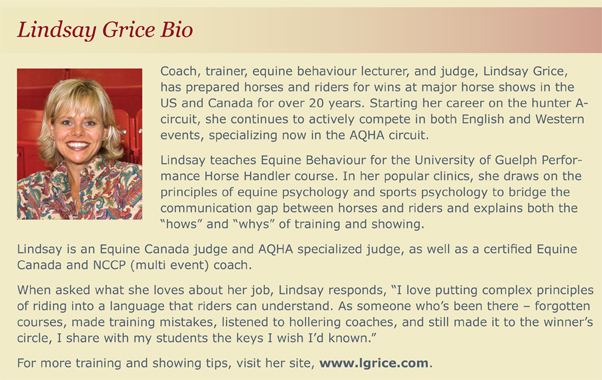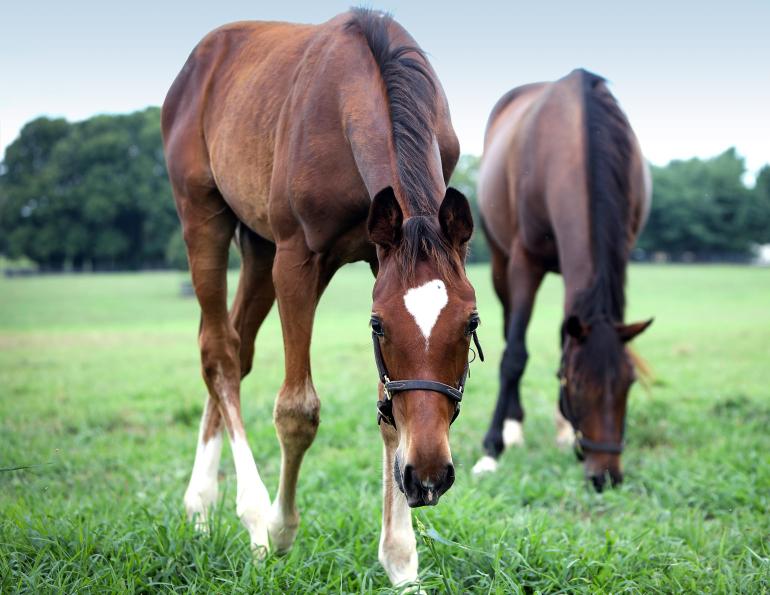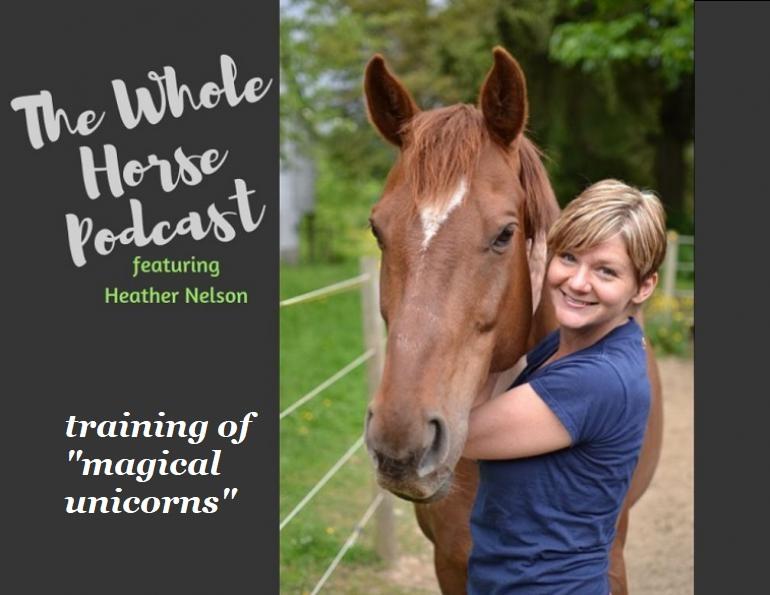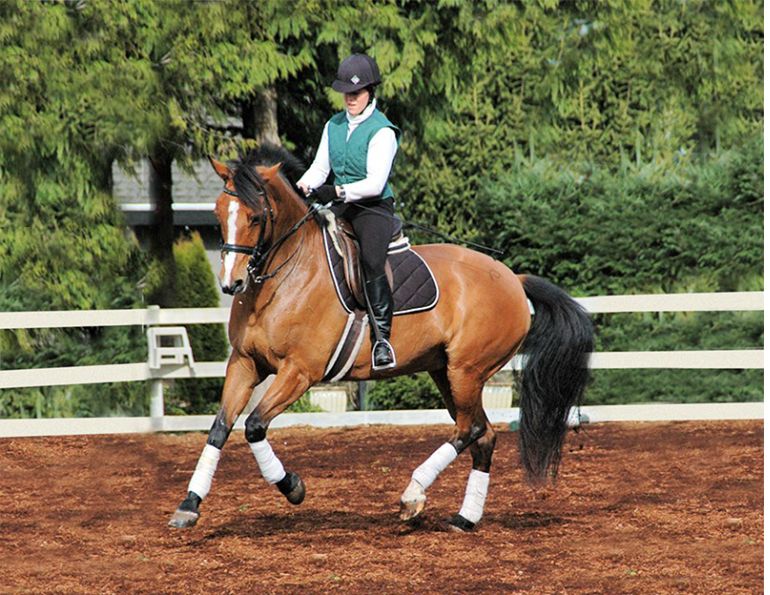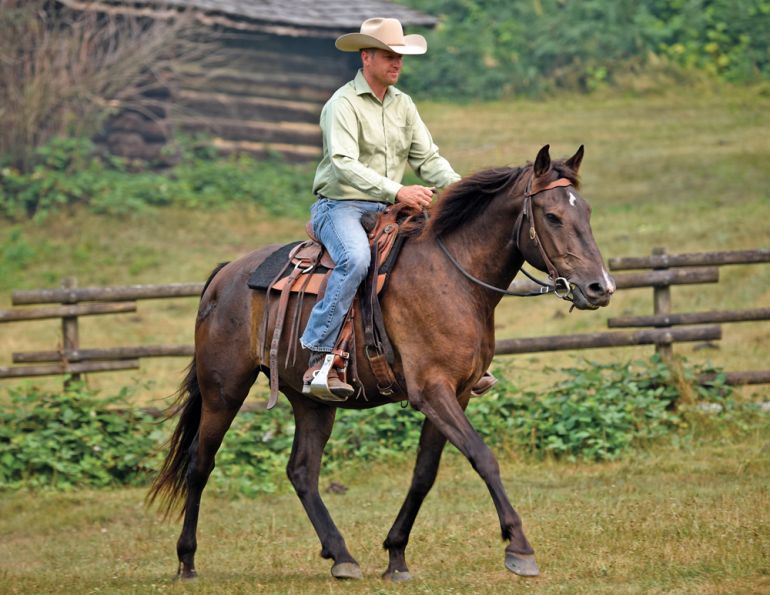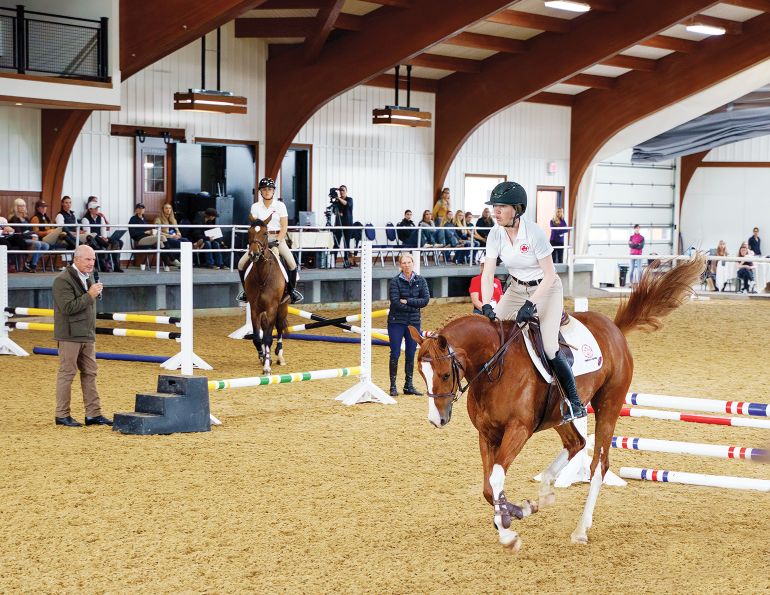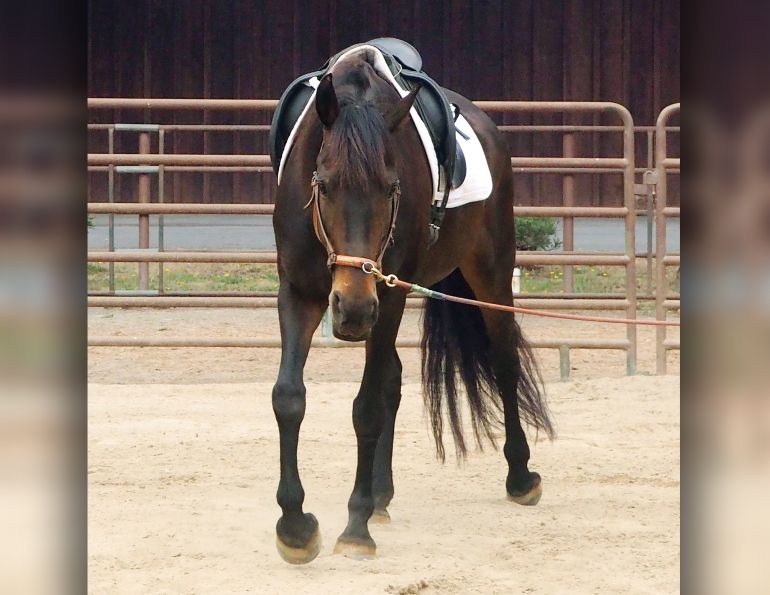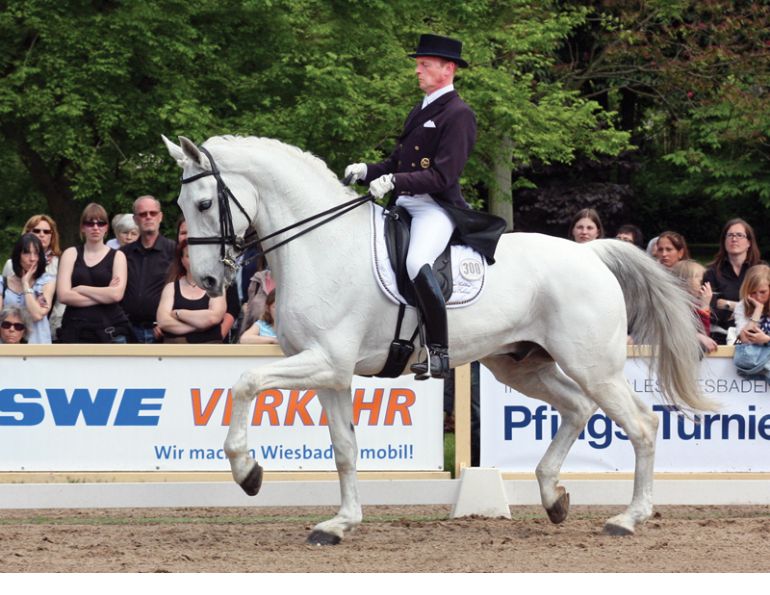By Lindsay Grice
Q I’ve been showing fairly successfully in Western events and would like to try English if I knew my horse had the talent for it. She’s not as big as some of the horses that I see in the Hunter Under Saddle classes. How can I evaluate her to see if she’s suitable for this event?
A Horses are evaluated in most disciplines according to talent, training, and temperament. The emphasis in each category will be different in every discipline. Let’s take at what the judges are looking for in Hunter Under Saddle (HUS).
Talent. The HUS horse is to have the ground covering stride that would be suitable to jumping a course of fences. Generally bigger horses have longer strides but this is not necessarily true. At the trot, the front legs should travel fairly flat rather than having much action or bend, and should appear to swing from the shoulder and point the toe. The trot should have a moment of suspension where the horse appears to be off the ground. Horses that are “slow legged” are preferred to those with quick, choppy strides. In the canter you will also see suspension or “air time”. The hind legs should also appear to swing rather than lift and bend, with the inside hind leg reaching up under the horse with each stride.
A graceful horse with a pretty, smooth profile will always catch the judge’s eye.
Training. No matter how great a mover a horse may be, he won’t get any prizes if he’s not disciplined and steady. Every stride should look the same as the horse travels around the ring — the same long, low frame and the same pace. Judges will penalize a horse that is behind the bit or one that carries his poll below the level of the withers. He can’t be distracted by the other horses in the ring or playing with the bit. Transitions must be smooth and effortless.
Temperament. Just like in Western Pleasure classes, a horse must appear to be content in his job. Ear pinning and irritable tail swishing is discouraged. A horse that appears to be nervous or has too much energy and needs to be held back by the rider will be passed over. The judges want to see the horse that is relaxed and pleasurable to ride.
Even if your horse isn’t the best mover or among the biggest in the class, if she really excels in the other two categories, she may still be competitive, depending on the level of competition. These days many horses score high in all three categories. As a rider, your presentation can enhance the presentation of your horse. Make sure the judge gets a good look at your horse. Try to stay out of traffic by either cutting off the corners of the ring to keep the pack of horses behind you, or by riding deeper into the corner so you don’t catch up to the group. A rein length that has soft contact (basically straight with just a little bit of movement) will show off a horse that doesn’t need much adjusting. A confident rider who looks up and ahead rather than staring at her horse shows pride and assurance. Take note of the current tack and dress code so that your outfit is up to date. And remember, many horses that aren’t winning in HUS do very well in Hunt Seat Equitation.
Main article photo: ChristinaHandleyStock.com - Hunter Under Saddle horses should have ground covering strides, a consistent pace, a long and low frame, and a relaxed attitude.




